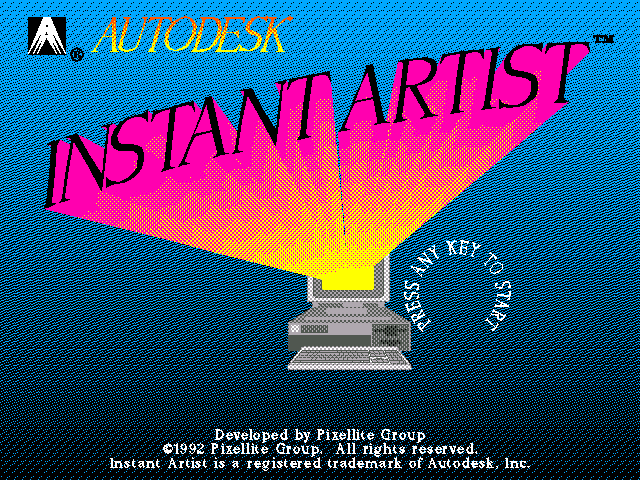
- #Instant artist linux drivers
- #Instant artist linux driver
- #Instant artist linux software
- #Instant artist linux download
Professor Franklin's Instant Photo Artist Professor Franklin's Instant Photo Artist enables you to take an ordinary photo and turn it into exciting work of art within minutes.and absolutely no artistic experience is needed!
#Instant artist linux software
Painting painting software freehand painting
#Instant artist linux drivers
And I can see that Discord totally messes up in voice chat that's not an issue of Manjaro I suppose, but it needs to be a problem with whether non-native support for rpm package (though tar.xz isn't native for discord either) or my audio drivers - didn't check them yet, but youtube sounds just fine.Professor Franklin Instant Photo Artist Turn any photo into a master painting! That's why I have to use Leap because I would have extreme issues with drivers.
#Instant artist linux driver
Second one is poor nVidia driver compability with Tumbleweed + KDE (no properiarty and nouveau may mess with some graphics, Tumbleweed and KDE). Would be nice if we could choose kernel too, but compability issues might be a problem. 4.4 is quite old, I was used to 4.14 and 4.15 in Manjaro, but yeah, I am comparing LTS vs rolling-release. If there is no official, then community helps or you can compile yourself from deb file by Alien.
#Instant artist linux download
Mentioned above rpm packages are quite popular (angery Discord, it's been a year and still no official rpm package) and you can download native versions. Even better that you don't actually need to use SUSE repos to download programs. I sometimes prefer Zypper to YaST alternative what I can't say about Pacman vs Pamac (even Octopi). Zypper is also easier to use than Pacman, very fast to use and still powerful. YaST does the same amazing job as a GUI installer. Also, what I liked in Manjaro was Pamac (XFCE, Octopi in KDE didn't get me). Also appearance of KDE in SUSE is somehow better than Manjaro. While Manjaro KDE tends to be dead even after 1st boot for me (it deletes whole grub_x86_64 folder!!! Happened several times! XFCE version was ok), OpenSUSE integrates very well with my triple-boot system. Very good integration with KDE, easy (yet powerful) administration, rpm packages, extra repos on OpenSUSE site created by community and devs themselves, rolling-release and LTS versions and the most important thing - stable as rock.

InterestingHapi's Experience -=Sorry for so long!=- So amazing that I would recommend to everyone who wants to pick a Linux as an operating system. This resulted in over 400 custom user repositories containing most of all modern open-source linux-compatible software on the internet. In the event that you'd encounter a program without a package in the repositories yet, writing ebuild files (which Portage uses to control the dependencies and build process, fetch all required data and build a package) is so trivial that after just an hour or less of reading you can just make one. Eselect allows you to change such things as used wine implementation, kernel source package or font configuration on the fly in one command. At the same time Gentoo's community has devised ways to intuitively switch between system settings. You have the power to spare, and you can use the old versions while the new build. But then, you're on a desktop, not a Raspberry Pi or production server. There is, of course, a price to pay - hugely complicated applications compile for a long time. It also basically ensures package compatibility and good behaviour - with Portage and its powerful build system fully in control of the build process and files. This allows for customisation not possible otherwise, like compiling programs tailored to fit a given role and not bothering with not needed parts, and perfect optimisation using all available hardware features, especially extended processor instructions, which can speed up programs a lot.

Gentoo is a source-based distribution, which means that instead of pulling arbitrary binary blobs from distribution maintainers and hoping they will play along with the rest of the system its package manager downloads sources and builds the programs itself. It provides more options and freedom than Arch and yet has sane defaults and comprehensive guides that make installing and configuring pretty much any software trivial. If you're an advanced user that wants to tailor and optimise the system perfectly to their needs, but in a more pleasant way than just Linux From Scratch or Arch, get Gentoo. If you just want to get a server running now, get Debian.

Deuxis's Experience If you want simplicity and "just works", get Linux Mint.


 0 kommentar(er)
0 kommentar(er)
